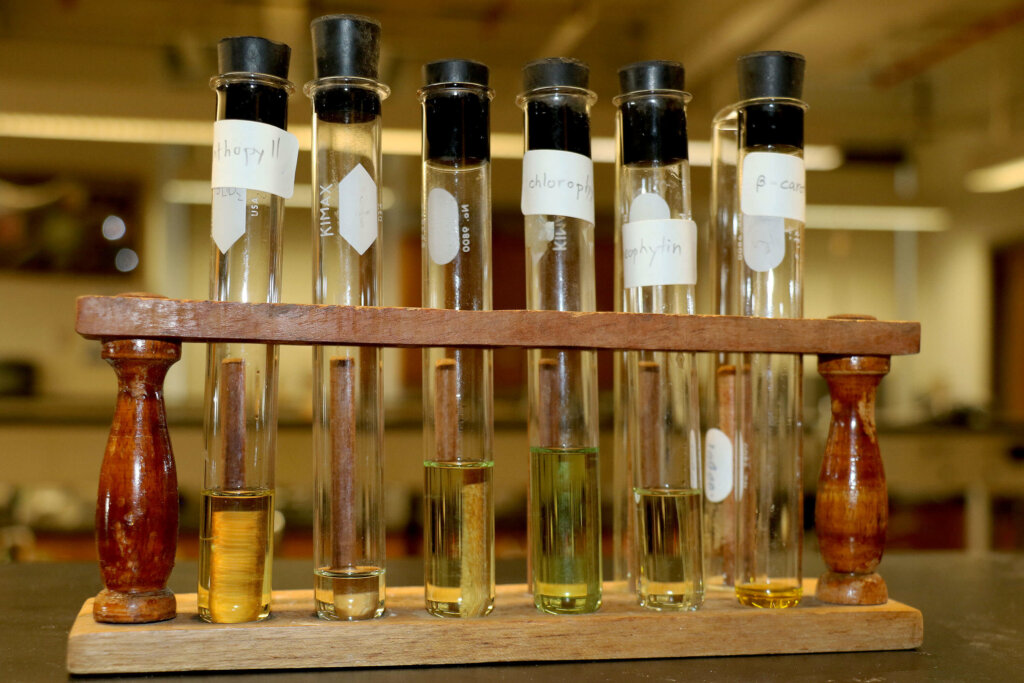News
What Color Is Spinach? AP Chem Lab Breaks it Down
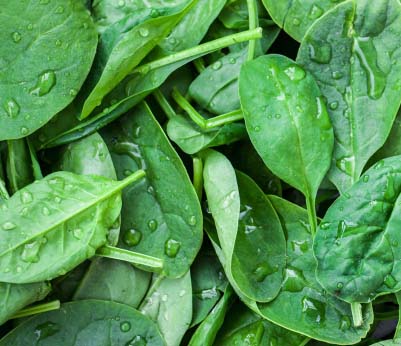
Do you know what color spinach really is? The answer may surprise you.
In a recent AP Chemistry lab, teacher Dr. Gail Horowitz led students in an experiment to separate the chromophores of spinach. In plants, such as spinach, photosynthesis takes place in chloroplasts, which contain chromophores, light absorbing components.
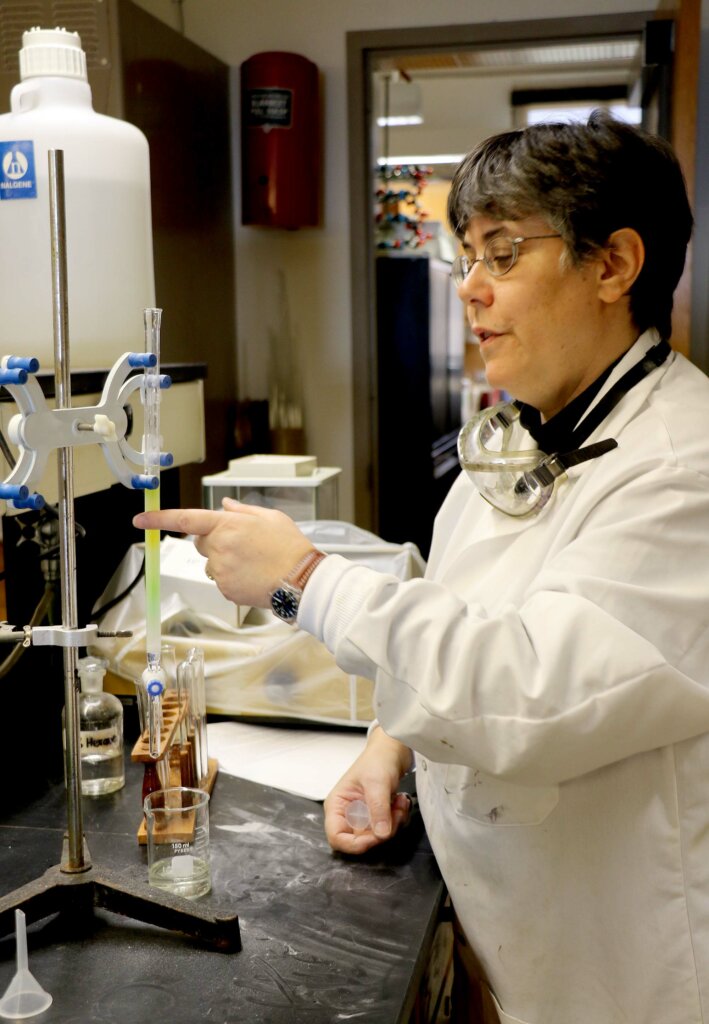
Dr. Horowitz has two sections of AP Chemistry. For her Tuesday class, seniors had already finished classes for the year, so Dr. Horowitz guided Francisco Ruiz ‘24 through the experiment so it could be documented.
The Experiment
In the second floor chemistry lab, while Dr. Horowitz retrieved the spinach extract from the freezer, Ruiz weighed out 5.5 grams of silica gel, a sand-like substance, under a protective hood. This is an experiment that Dr. Horowitz has used in the past with college students. The goal of the experiment is to extract the colored components using an organic solvent, in this case hexane, and to separate the components into beta carotene, chlorophyll, and xanthophyll.
This experiment uses column chromatography to separate the colors that make up spinach. Into a tall column, which had been clamped in an upright position, Ruiz poured 20 ml of hexane and then added the 5.5 grams of silica gel. There was a large test tube below to collect any solvent that dripped out. Then Ruiz used a pipette to add the spinach to the column. The goal is to get tight bands of spinach extract in the forms of green chlorophyll, yellow beta carotene, a yellow-green xanthophyll, and gray pheophytin to appear on the column. The pigments in spinach separate because of the high polarity of the silica gel.
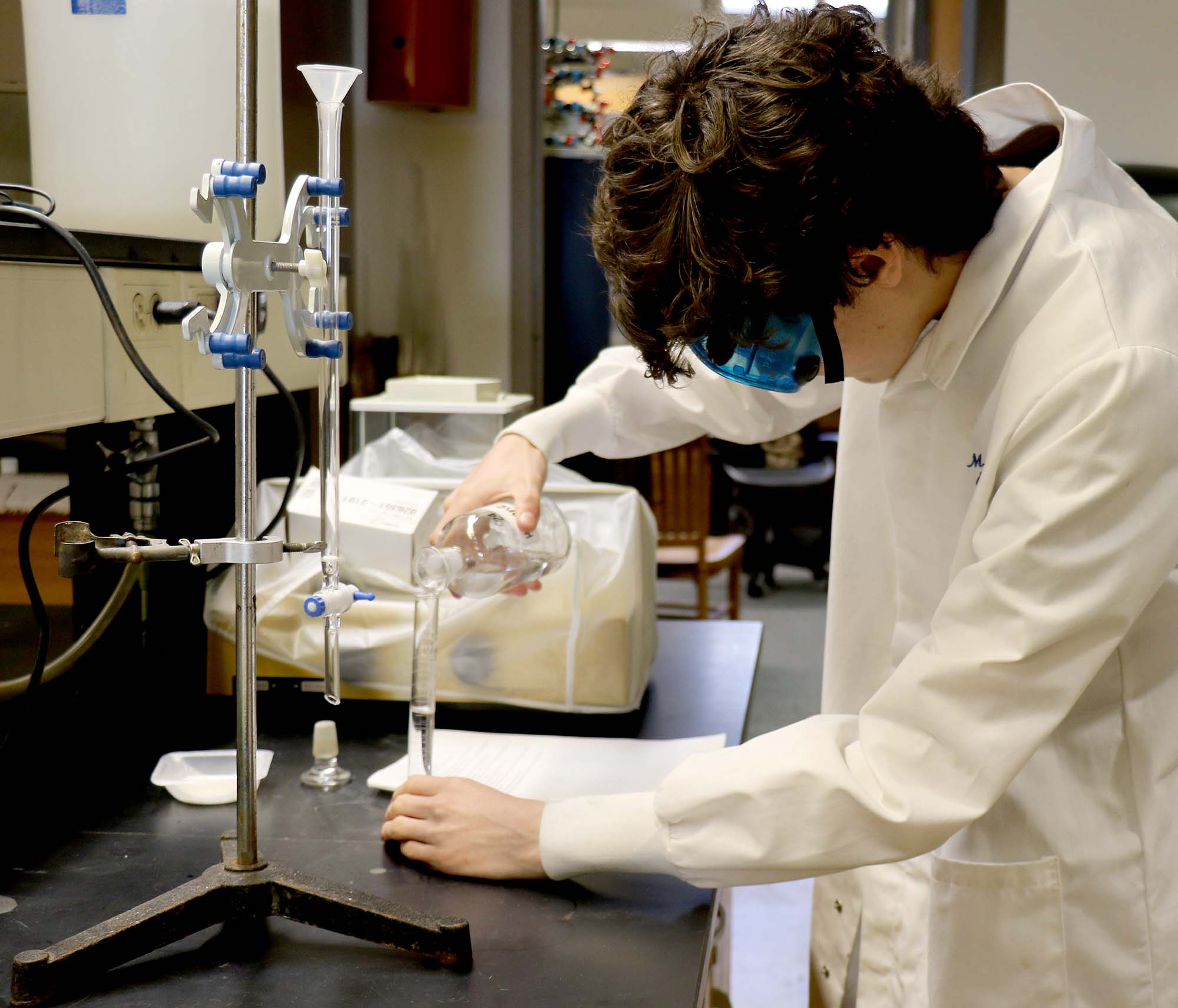
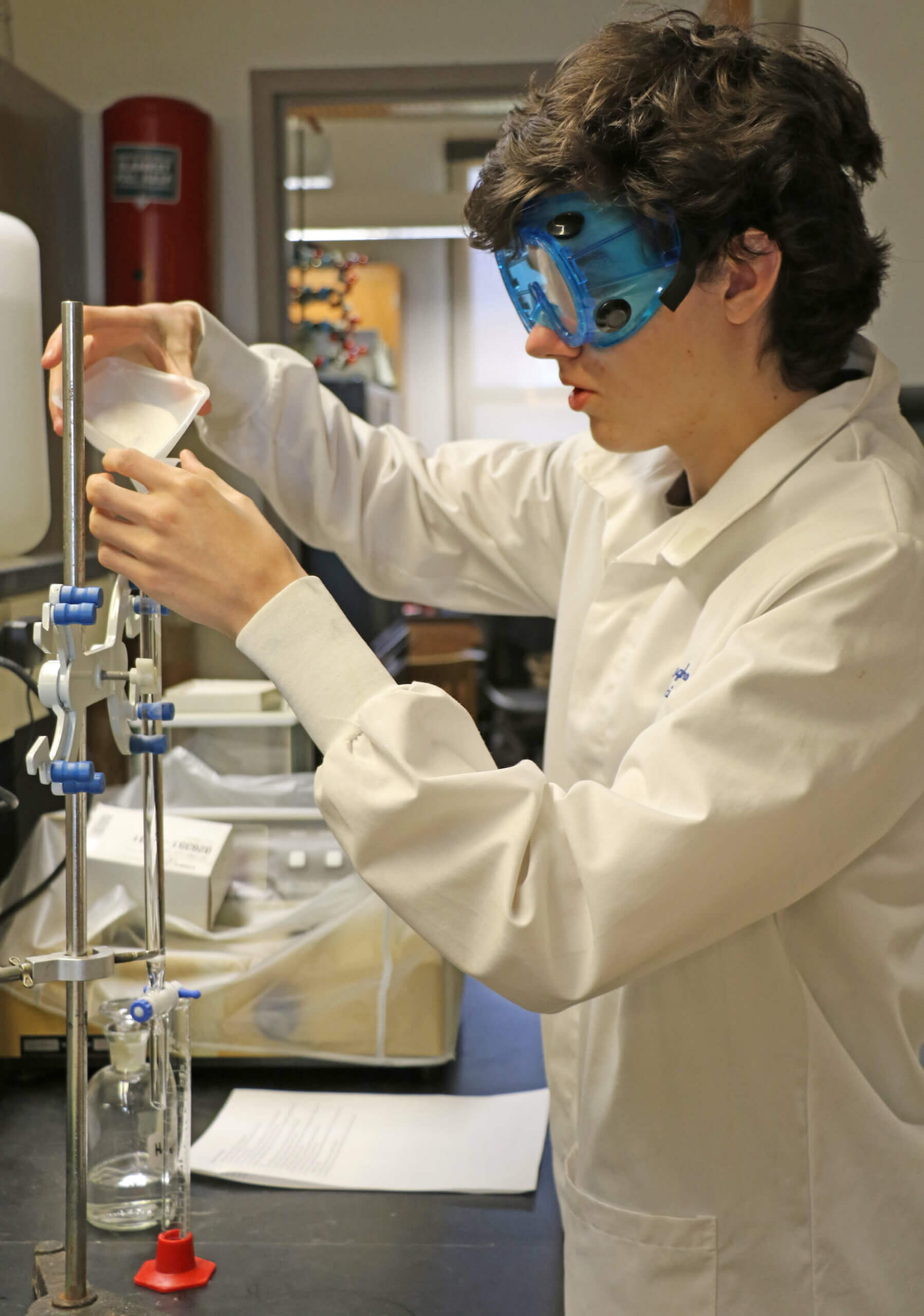
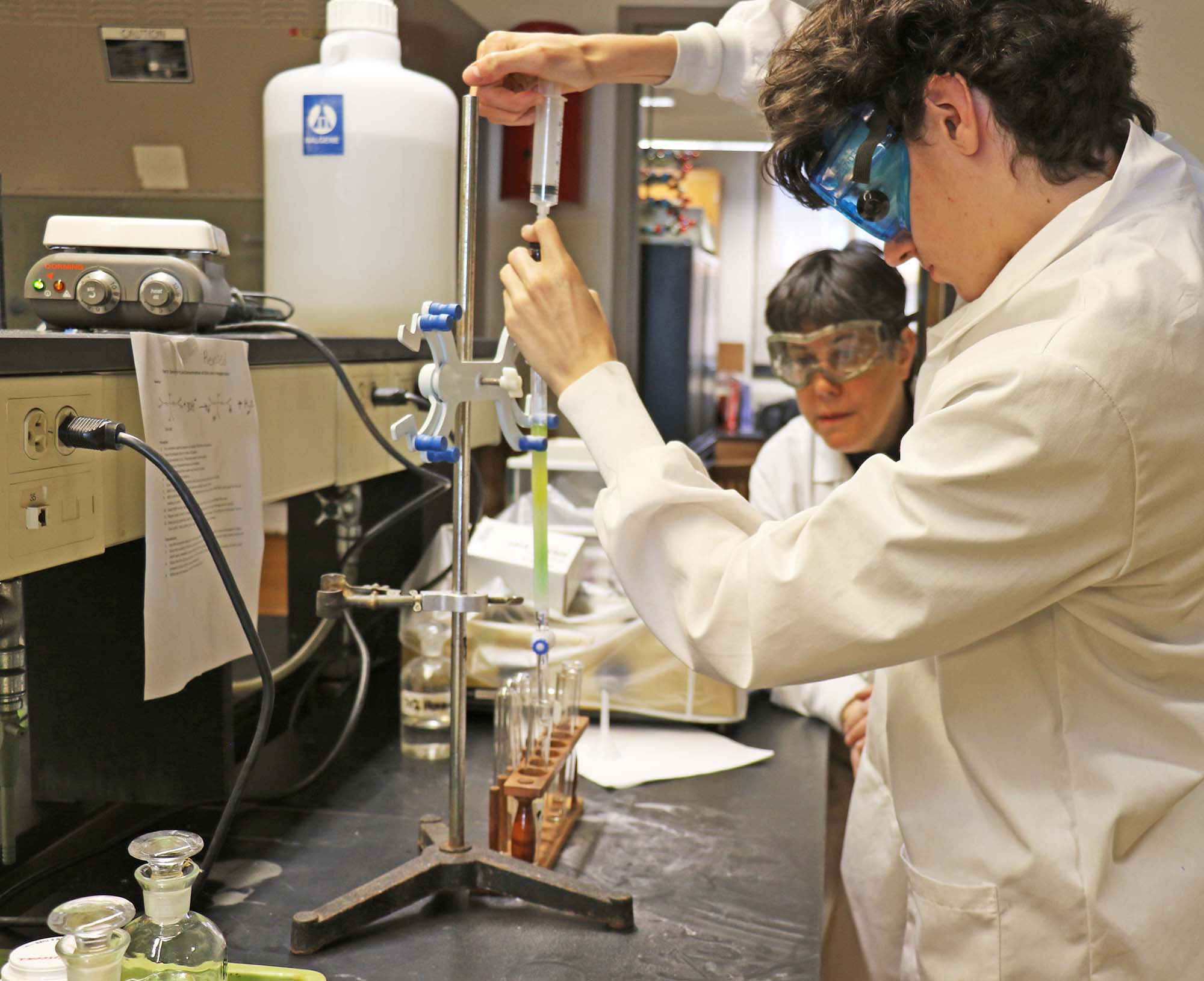
As the bands of beta carotene, chlorophyll, xanthophyll, and pheophytin separated in the column and were easily visible, Dr. Horowitz had Ruiz use a syringe to force air into the column to move each band down to the bottom of the column and so it could be collected into a different test tube for each pigment.
So, about that initial question. We learned that spinach is not just green, but is composed of several colors or pigments that are important parts of photosynthesis.
